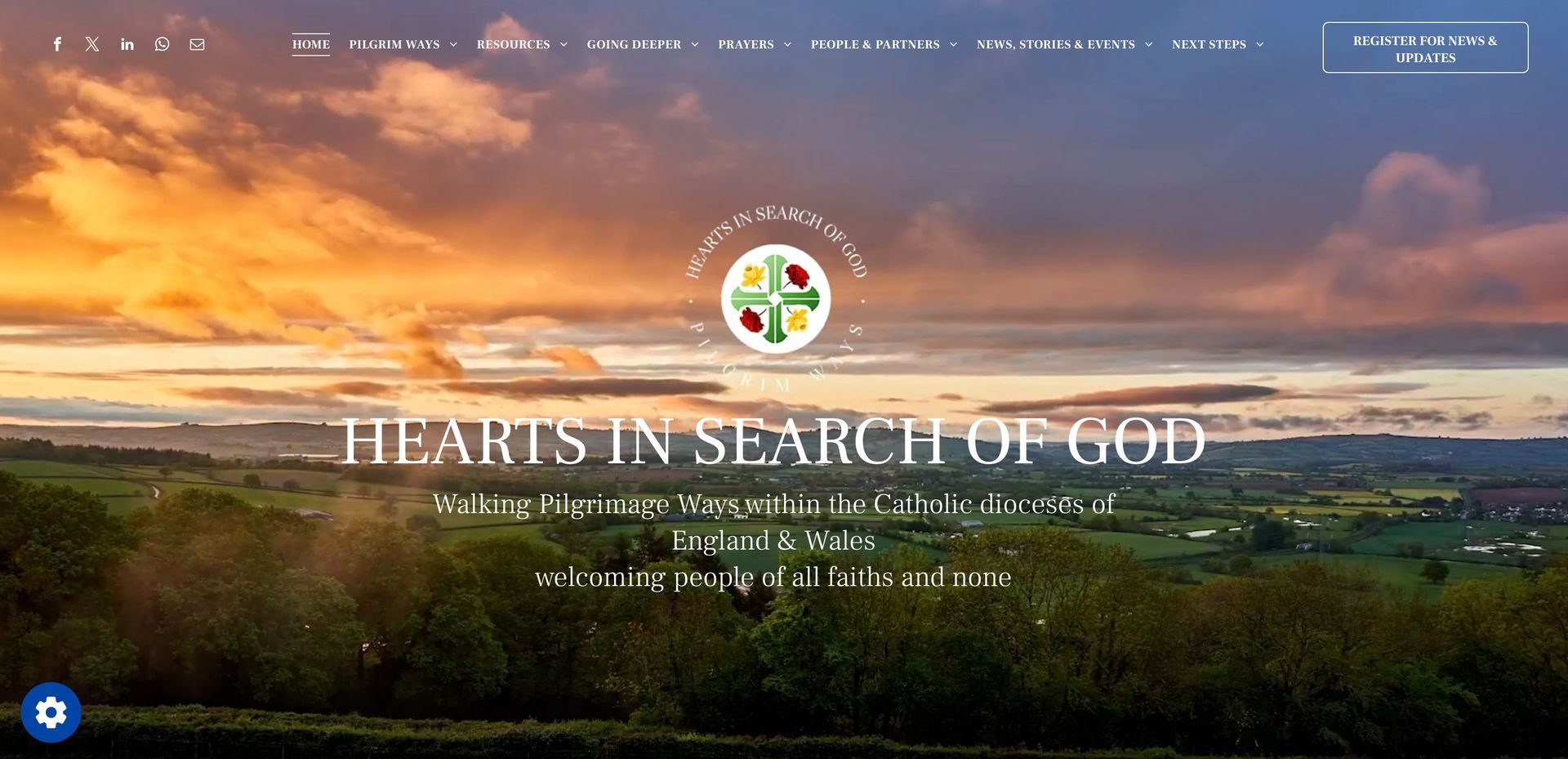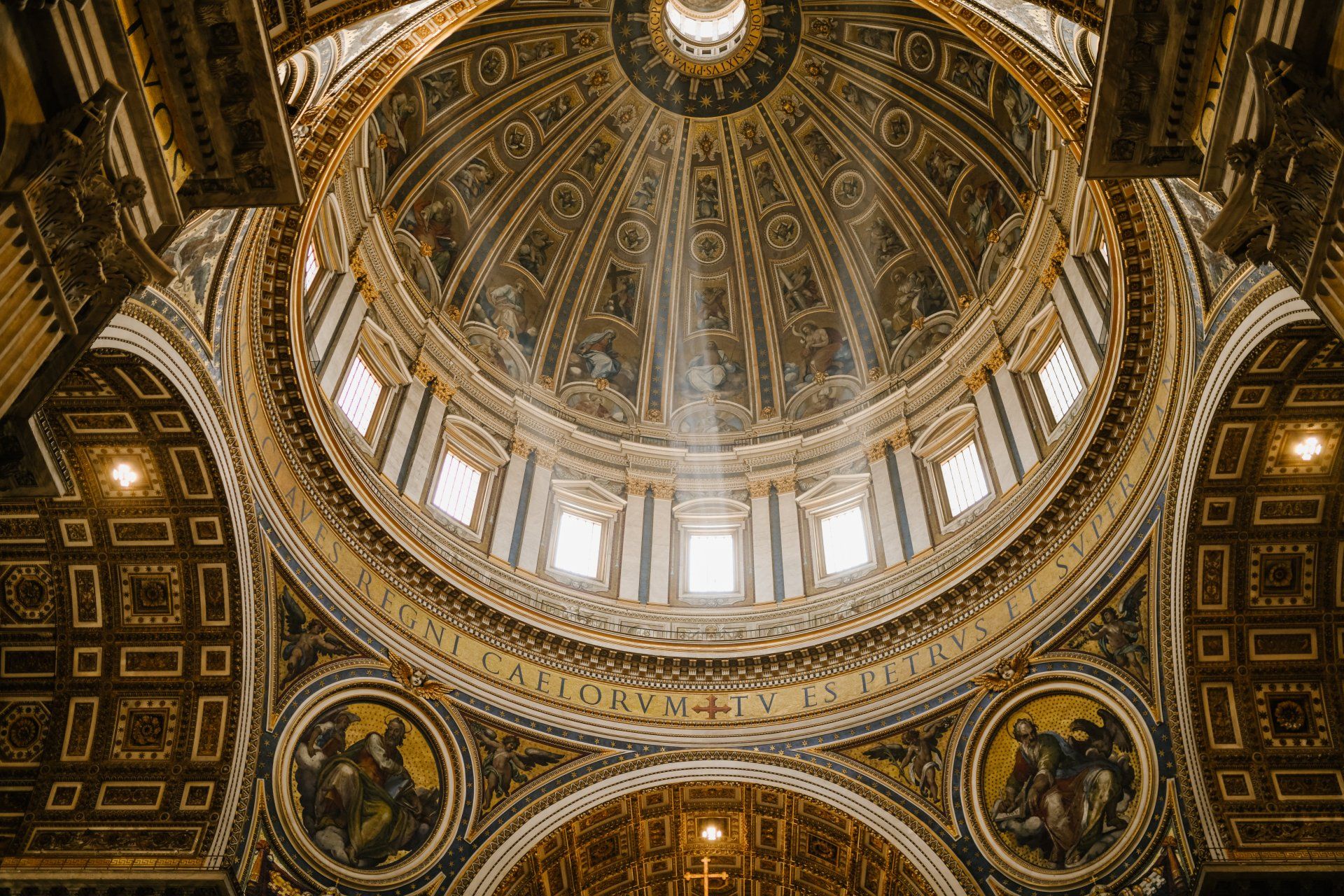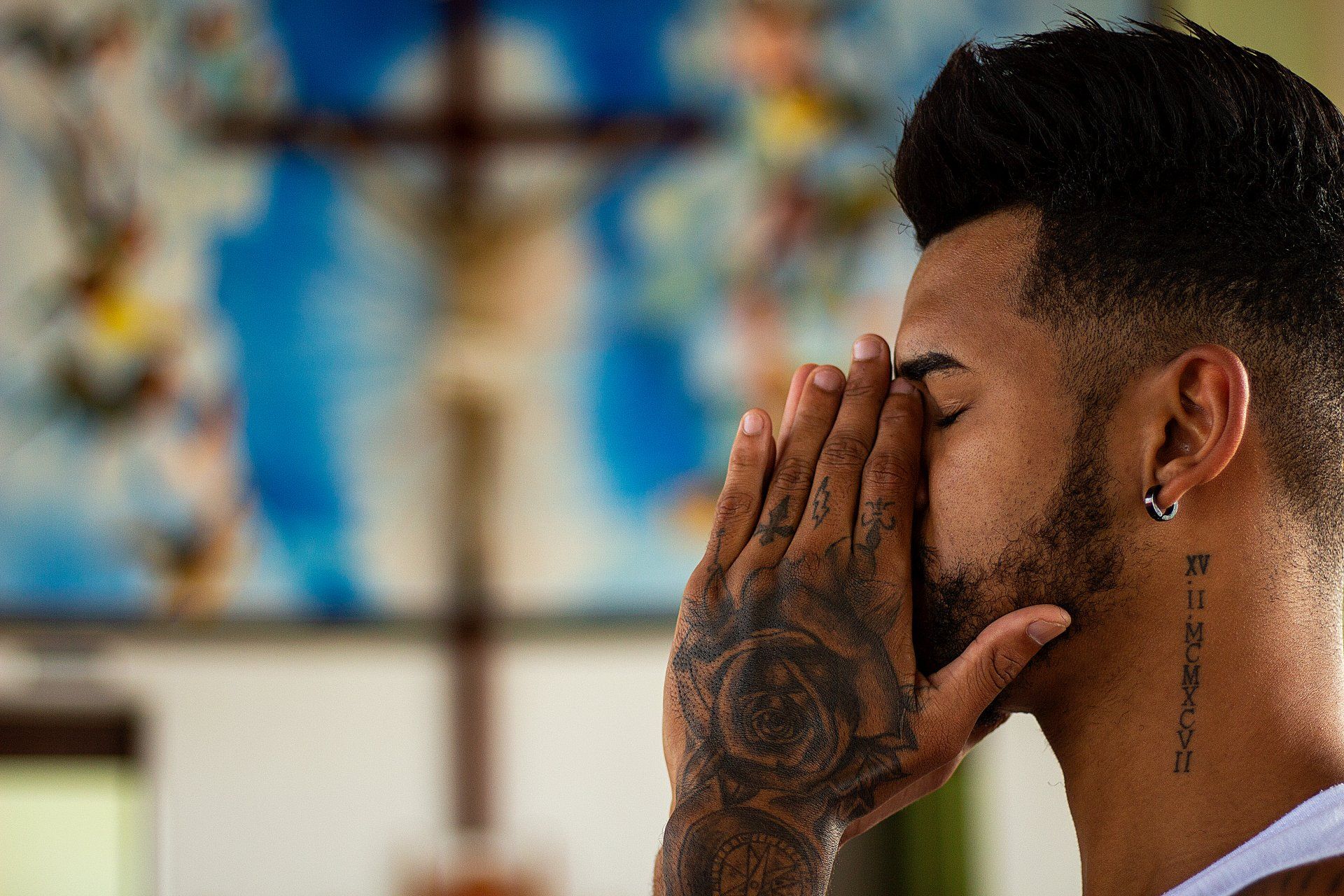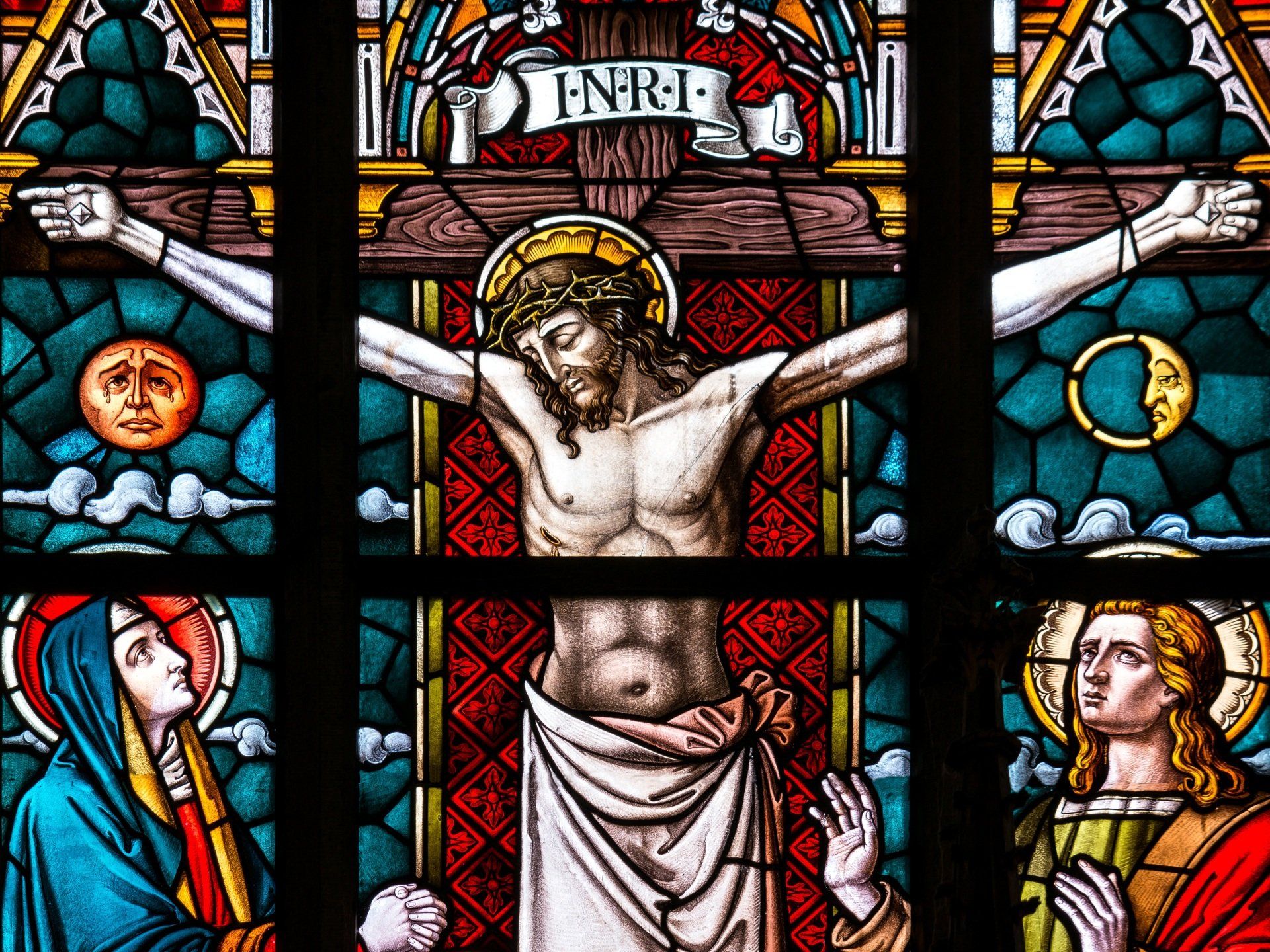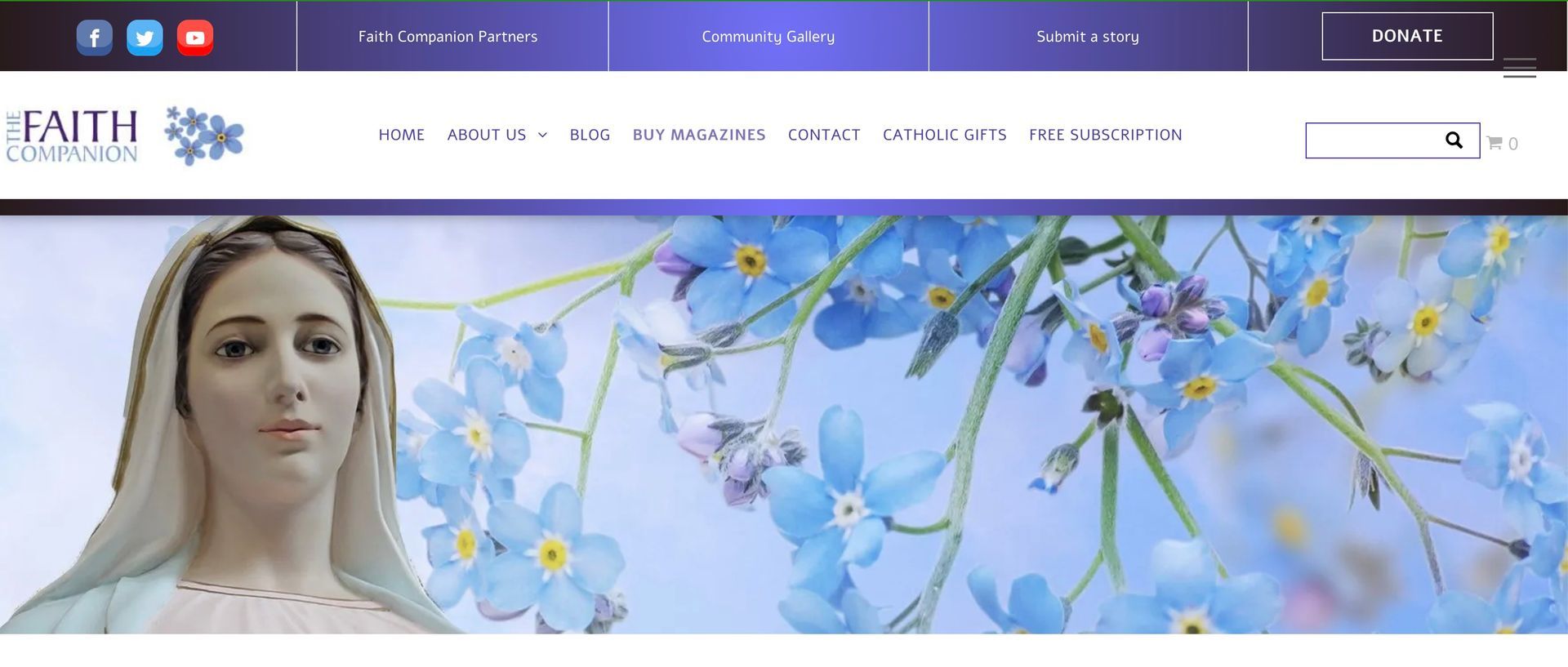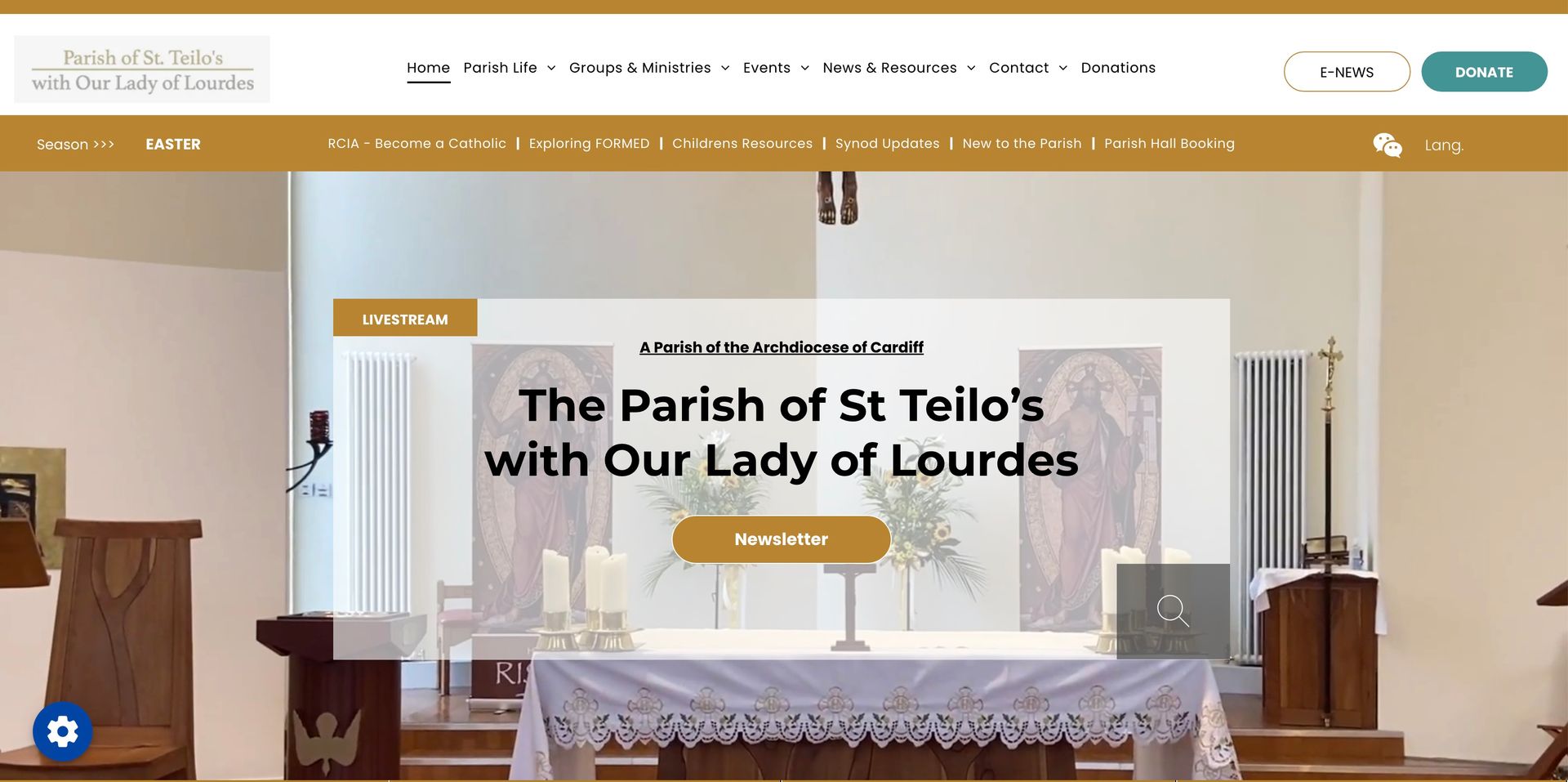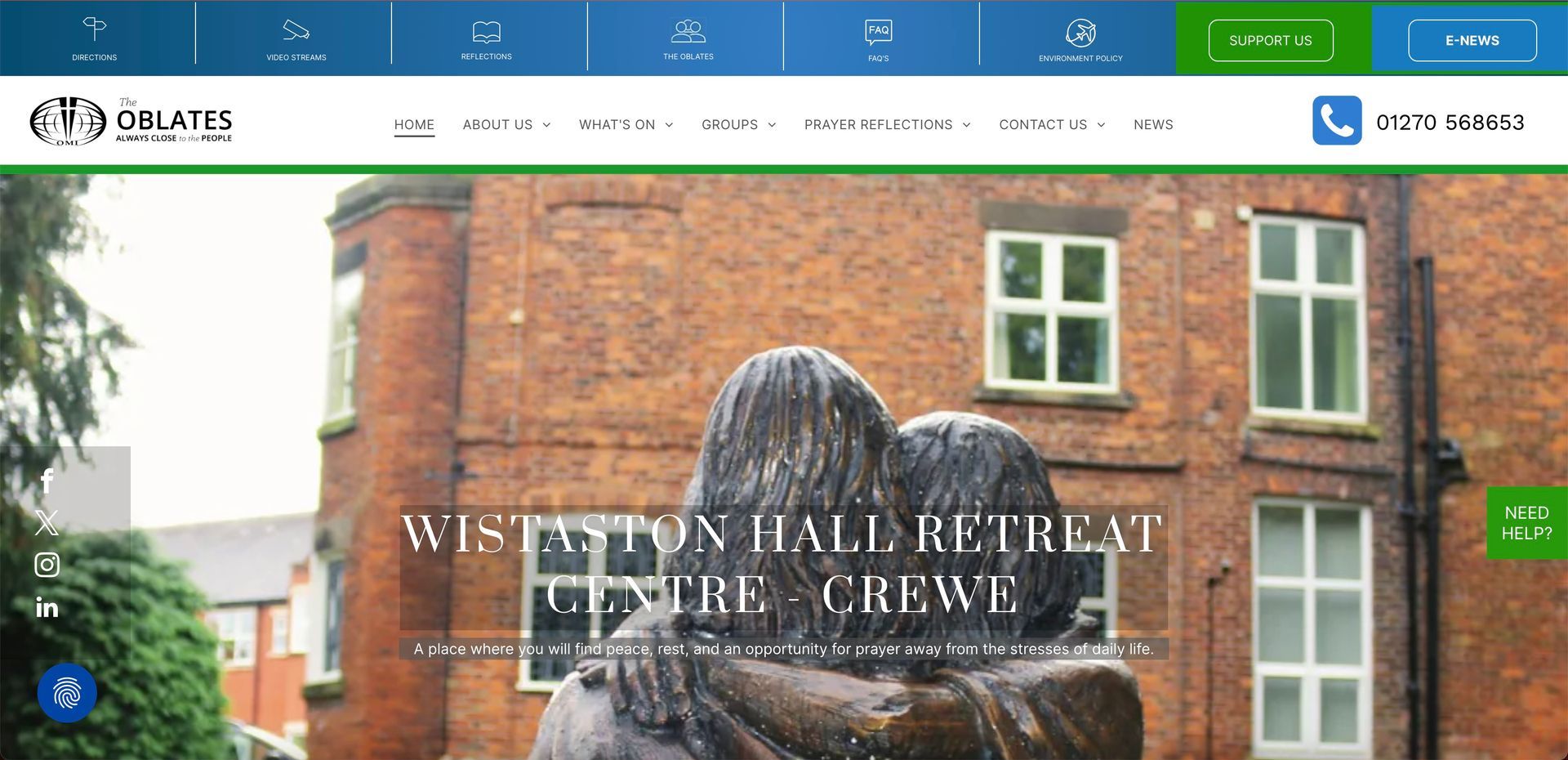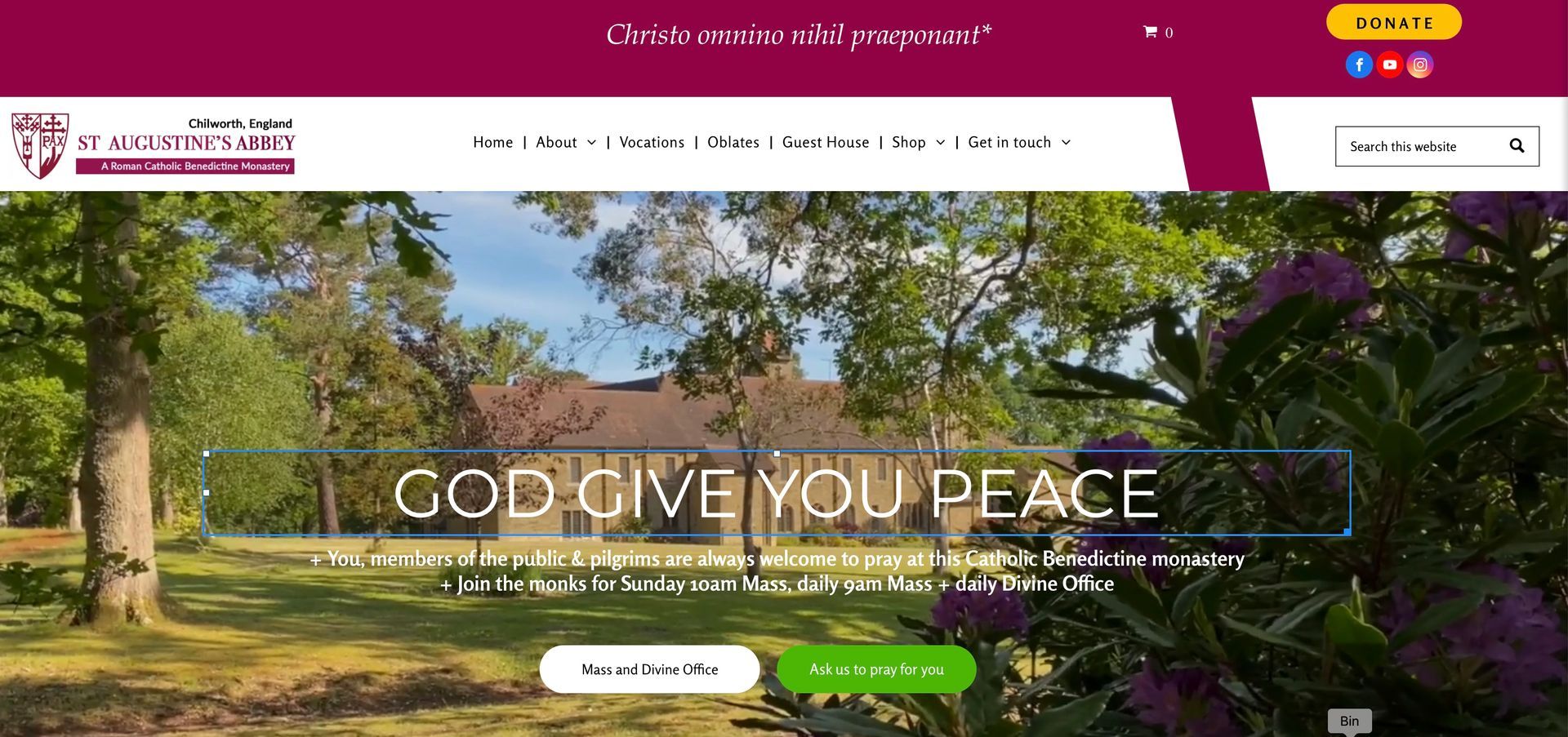What is the Divine Mercy Devotion?
An article published in The Faith Companion Magazine - Permission to publish granted. - View the Community Space
St Faustina is one of the most important saints of the 20th century due to private revelations she received from Jesus and recorded in her Divine Mercy diary,1 which has now been officially sanctioned by the Catholic Church. It is through St Faustina that God made known His message of abundant Divine Mercy to the entire Church – a rich devotion. Devotion to the Divine Mercy of God shows us He sees us through the eyes of Mercy – the reason for our salvation.
There are five ways in which the message of
Divine Mercy can be understood:
firstly, Jesus asked that the Divine Mercy image given to St Faustina be meditated upon; secondly, through the establishment of a Divine Mercy celebration, which is now the Solemnity of Divine Mercy Sunday; thirdly, through praying the Divine Mercy Chaplet, preferably daily; fourthly, honouring the day (Friday) and hour of Jesus’ death (3pm), remembered preferably by praying the Divine Mercy Chaplet; and lastly, He asked for all to actively spread the message of Divine Mercy by sharing its message and showing Mercy to others.2 When requesting a special Feast Day to be attributed to His Divine Mercy, which is now held on the first Sunday after the Easter weekend, Jesus said,
“I desire that the Feast of Mercy
be a refuge and shelter for all
souls, and especially for poor
sinners. On that day the very
depths of My tender mercy
are open. I pour out a whole
ocean of graces upon those
souls who approach the fount
of My mercy. The soul that will
go to Confession and receive
Holy Communion shall obtain
complete forgiveness of sins and
punishment. On that day all the
divine floodgates through which
grace flow are opened. Let no
soul fear to draw near to Me, even
though its sins be as scarlet.”3
It is worthy to note that at one point St Faustina’s diary was forbidden
by the Church due to the message of Divine Mercy being given via a private revelation. The Church had to spend time discerning its legitimacy. The Church has created norms discerning the legitimacy of private revelations
and apparitions in the document, ‘Norms Regarding the Manner of
Proceeding in the Discernment of Presumed Apparitions or Revelations.’
4 Backed by Pope John Paul II, Pope Benedict XVI and Pope Francis we have no need for caution with St Faustina’s private revelations. The types of experiences and private revelations we uncover in ‘The Faith Companion’
are not officially sanctioned and recognised by the Church;
we simply publish peoples’ experiences of God as lived in ordinary
life. However, like officially sanctioned private revelations, God doesn’t intend them to be ‘private’ for the individual but are given for the good of the whole
of God’s children and His Church, which is why we share them
“I demand the worship of My
mercy through the solemn
celebration of the Feast and
through the veneration of the
image which is painted. By
means of this image I shall grant
many graces to souls. It is to be
a reminder of the demands of
My mercy, because even the
strongest faith is of no avail
without works.”
“I am offering people a vessel with
which they are to keep coming for
graces to the fountain of mercy.
That vessel is this image with the
signature: ‘Jesus, I trust in You’.”
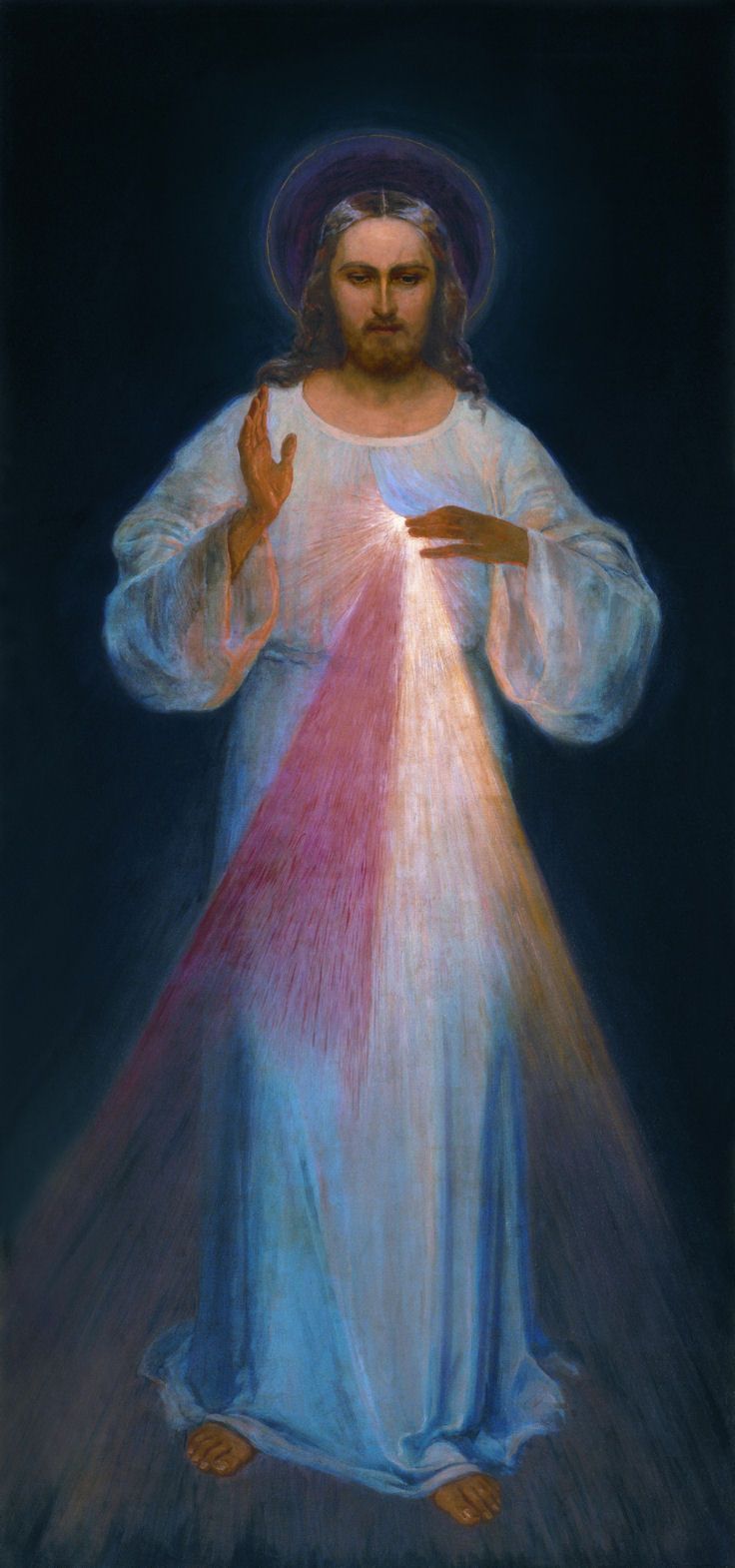
1. Make the Sign of the Cross
“In the name of the Father, and
of the Son, and of the Holy Spirit.
Amen.”
2. Optional Opening Prayers
St Faustina’s Prayer for Sinners: “O Jesus, eternal truth, our life, I call upon you and I beg your mercy for poor sinners. O sweetest Heart of my Lord, full
of pity and unfathomable mercy, I plead with you for poor sinners.
O most Sacred Heart, fount of mercy from which gush forth rays of inconceivable graces upon the entire human race, I beg of you
light for poor sinners.
O Jesus, be mindful of your own bitter Passion and do not permit
the loss of souls redeemed at so dear a price of your most precious Blood.
O Jesus, when I consider the great price of your Blood, I rejoice at
its immensity, for one drop alone would have been enough for the salvation of all sinners. Although sin is an abyss of wickedness and
ingratitude, the price paid for us can never be equalled.
Therefore, let every soul trust in the Passion of the Lord, and place
its hope in His mercy. God will not deny His mercy to anyone. Heaven
and earth may change, but God’s mercy will never be exhausted. Oh, what immense joy burns in my heart when I contemplate your incomprehensible goodness, O Jesus! I desire to bring all sinners to your feet that they may
glorify your mercy throughout endless ages”.
O Fount of Life:
“You expired, Jesus, but the
source of life gushed forth for
souls, and the ocean of mercy
opened up for the whole world. O
fount of life, unfathomable Divine
Mercy, envelop the whole world
and empty yourself out upon us.”
O Blood and Water: (X3)
“O blood and water, which gushed
forth from the Heart of Jesus as
a fount of mercy for us, I trust in
you!”
3. Our Father
“Our Father, who art in heaven, hallowed be thy name; thy kingdom come; thy will be done, on earth as it is in heaven. Give us this day our daily bread; and
forgive us our trespasses, as we forgive those who trespass against us; and lead us not into temptation, but deliver us from evil, Amen.”

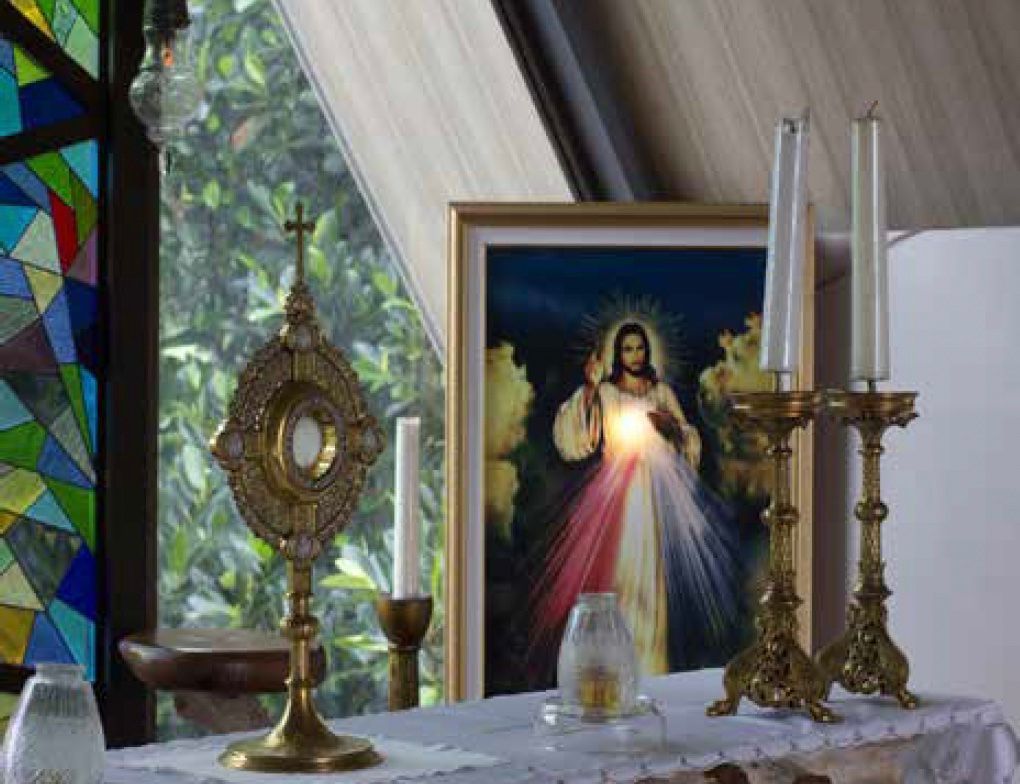
A central theme that grows from the Divine Mercy devotion is trust in Jesus, which is central to the Divine Mercy Chaplet prayer, ‘Jesus, I Trust in You’.
“I desire trust from My creatures.
Encourage souls to place great
trust in My fathomless mercy. Let
the weak, sinful soul have no fear
to approach Me, for even if it had
more sins than there are grains
of sand in the world, all would be
drowned in the unmeasurable
depths of My mercy.”
Many may pray the Divine Mercy Chaplet prayer, but according to the revelations to St Faustina it is through the image that graces are given. So, viewing the image is as essential as praying the chaplet – graces flow through the image.
With venerating the image and honouring these devotions Jesus promises protection over our lives and against evil:
“I promise that the soul that
will venerate this image will not
perish. I also promise victory
over [its] enemies already here
on earth, especially at the hour
of death. I Myself will defend it as
My own glory.”
“Souls who spread the honour of
My mercy I shield through their
entire lives as a tender mother
her infant, and at the hour of
death I will not be a Judge for
them, but the Merciful Saviour. At
that last hour, a soul has nothing
with which to defend itself except
My mercy. Happy is the soul that
during its lifetime immersed itself
in the Fountain of Mercy, because
justice will have no hold on it.”
In today’s trying times it is comforting to know we have a loving, merciful God in heaven who, by seeing us through the eyes of His Divine Mercy, will always be there for us with open arms. No matter how sinful, how wayward we His children are, His Mercy will always be superabundant and His graces never-ending. So, having this revealed to us, it is up to us to honour Divine Mercy Sunday, with Confession beforehand, if necessary, but the important thing to note is we also need to venerate the Divine Mercy image through which flow graces unfathomed.
How to Pray the Divine Mercy Chaplet
The Chaplet of Mercy is recited using ordinary Rosary beads of five decades. The Chaplet is preceded by two opening prayers from St Faustina’s diary and
followed by a closing prayer.
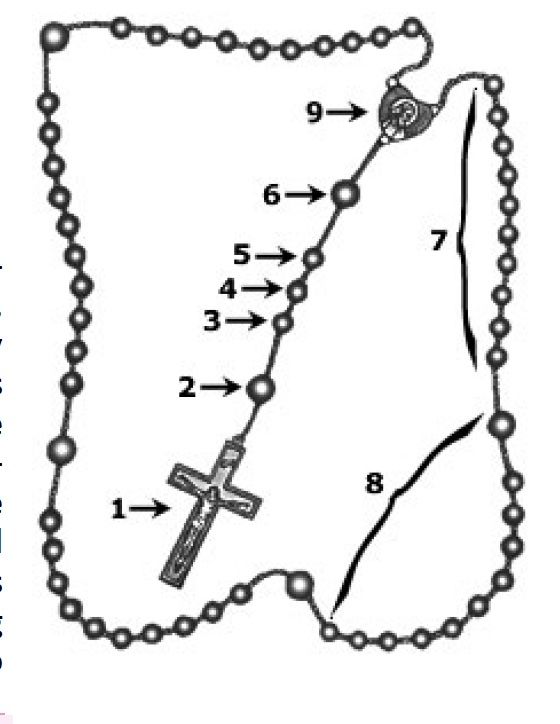
4. Hail Mary
“Hail Mary, full of grace, the Lord is with thee. Blessed art thou
amongst women, and blessed is the fruit of thy womb, Jesus. Holy
Mary, Mother of God, pray for us sinners, now and at the hour of
our death, Amen.”
5. The Apostles’ Creed
“I believe in God, the Father almighty, creator of heaven and earth, and in Jesus Christ, His only Son, our Lord, who was conceived by the Holy Spirit, born of the Virgin Mary, suffered under Pontius Pilate, was crucified, died and was buried; He descended into hell; on the third day He rose again from the dead; He ascended into heaven, and is seated at the right hand of God the Father almighty; from there He will come to judge the living and the dead. I believe in the Holy Spirit, the Holy Catholic Church, the communion of
saints, the forgiveness of sins, the resurrection of the body, and life
everlasting. Amen.”
6. The Eternal Father “Eternal Father, I offer you the Body and Blood, Soul and Divinity of your dearly beloved Son, Our Lord, Jesus Christ, in atonement for our sins and those of the whole world.”
7. On the 10 Small Beads of Each Decade
“For the sake of His sorrowful Passion, have mercy on us and on the whole world.”
8. Repeat for the Remaining
Decades Say the ‘Eternal Father’ (step 6) on the ‘Our Father’ bead, and then
repeat “For the sake of His sorrowful
Passion…” (step 7) 10 times on
the following ‘Hail Mary’ beads.
9. Conclude with Holy God
(Repeat three times)
“Holy God, Holy Mighty One,
Holy Immortal One, have mercy
on us and on the whole world.”
REFERENCES
1. St Maria Faustina Kowalska. 1981.
“Diary of Saint Maria Faustina Kowalska:
Divine Mercy in My Soul”, 1st ed.
Stockbridge, Massachusetts: Marian
Press.
2. My Catholic Life. 2020. “Catholic Daily
Reflections: The Divine Mercy”. Found
at: https://catholic-daily-reflections.
com/2020/04/18/the-divine-mercy/
Accessed on 4th February 2023.
3. Pronechen, J. 2020. “17 Things Jesus
Revealed to St Faustina About Divine
Mercy”, Diary, para 669. Published by
National Catholic Register. Found at:
https://www.ncregister.com/blog/17-
things-jesus-revealed-to-st-faustinaabout-
divine-mercy Accessed on 30th
January 2023. All of St Faustina’s diary
extracts for this article have been
taken from this source, unless stated
otherwise.
4. Francis Cardinal Šeper. 1978. “Norms
Regarding the Manner of Proceeding
in the Discernment of Presumed
Apparitions or Revelations”. Found at:
https://www.vatican.va/roman_curia/
congregations/cfaith/documents/
rc_con_cfaith_doc_19780225_normeapparizioni_
en.html Accessed on 11th
February 2023.
5. Diary, para 1059.
6. Diary, para 742.
7. Diary, para 327.
8. Diary, para 48.
9. Diary, para 1075.
10. “How to Recite the Chaplet”. Found
at: https://www.thedivinemercy.org/
message/devotions/pray-the-chaplet
Accessed on 9th February 2023.
11. Diary, para 72.
